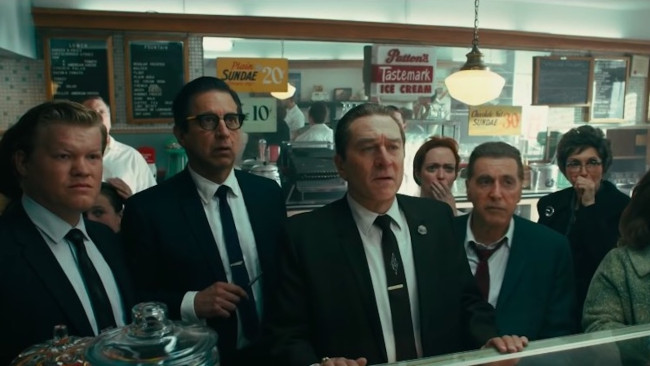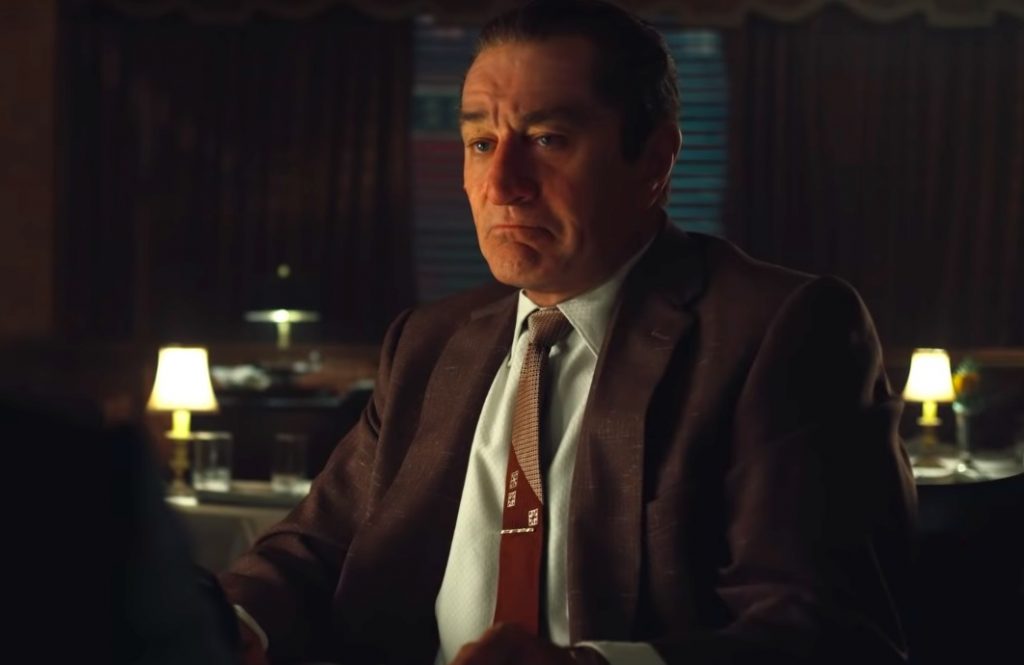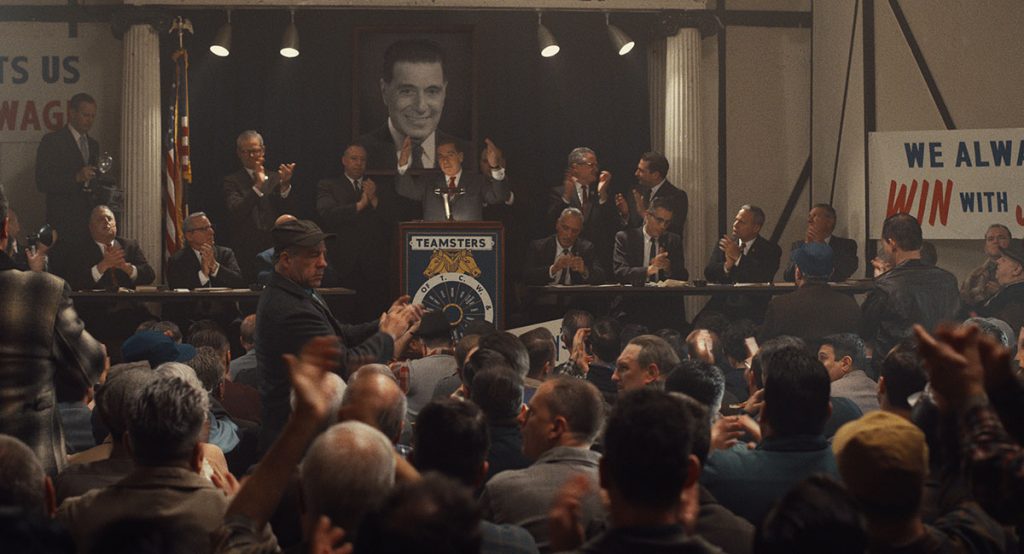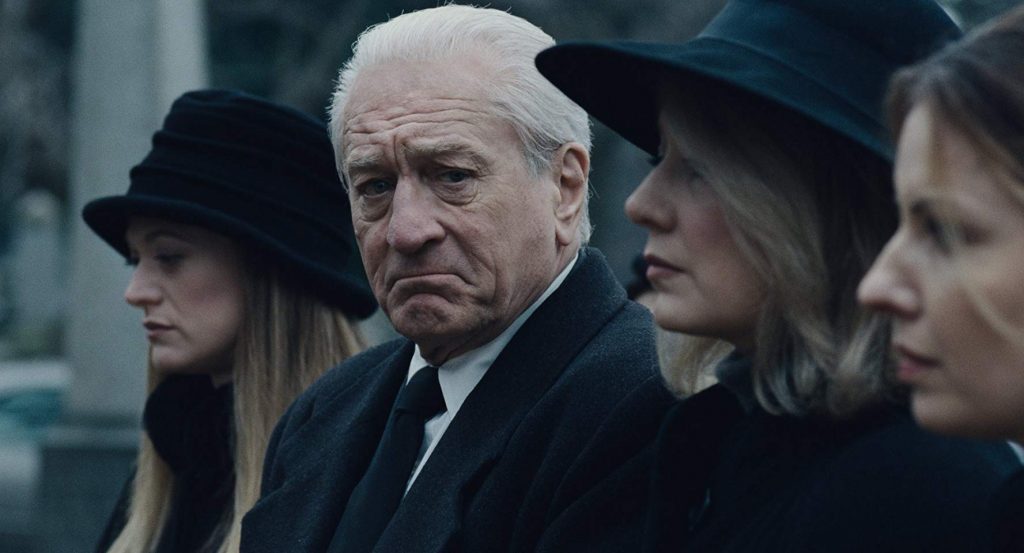This film is currently in theaters in select markets and premieres November 27th on Netflix.

Martin Scorcese has directed some incredible crime films over the past four decades, including Mean Streets, Goodfellas, Casino, Gangs of New York and The Departed. It’s safe to say this moviemaker certainly knows a thing or two about underworld figures and delivering their stories with authenticity. His latest, The Irishman, is based upon the 2004 non-fiction memoir I Heard You Paint Houses, which details the life of a hit man who finds himself in the company of the mob and one of the country’s most notable union leaders. The project allows Scorcese to work with familiar faces and paint yet another incredible portrait of a mystery from the point of view of a man who may have witnessed it all.

Told through flashbacks, the tale follows Frank Sheeran (Robert DeNiro), a war veteran and truck driver ready to do anything to earn more money for his family. Frank accidentally crosses paths with local mobster Russel Bufalino (Joe Pesci), who takes an immediate liking to him. The driver is soon indoctrinated into a syndicate that includes Angelo Bruno (Harvey Keitel) and family lawyer Bill Bufalino (Ray Romano). In part due to his experiences in the war, Frank finds assassinating random targets to be no strain on his conscience. But while most of his family appear unconcerned, his violent activities create a continuing rift with daughter Peggy (Lucy Gallina and Anna Paquin). As Frank rises up the mob ranks, he also befriends union leader Jimmy Hoffa (Al Pacino), with whom he forms one of his closest bonds. But as tensions rise between Hoffa and the outfit, the lead is forced into choosing sides.
Much of the publicity revolving around the film involves three lead performers, who are much older than the characters they portray. Extensive digital technology has been used to de-age them during various time periods. On a big screen (where this reviewer watched the picture), it works very well for the most part. A few medium shots of DeNiro early on have a somewhat waxy appearance, but as time passes and the story builds, the CGI work being employed ceases to be a distraction.

The effects work may be most convincing on Pacino, whose transformation looks seamless. He carries himself so well that it almost feels like the actor is channeling a younger version of his onscreen persona. Hoffa is also a fascinating eccentric (one thing is for certain – the man likes his sundaes and you don’t ever want to deny him his ice cream) and the character veers been stubborn and sweet as well as angry and impertinent depending on the situation. Pacino delivers some of the film’s most compelling moments (involving confrontations with mobsters and associates), painting a fascinating and detailed picture of a man who finds his organization slowly being taken from him by criminal figures.

The movie is also helped by the detailed screenplay. This is a more subdued and melancholic gangster picture from Scorcese, that through the Frank character examines the personal consequences and effects of embarking on a life of crime. Even so, the movie isn’t ponderous and the dialogue couldn’t be crisper. The camera moves from the director are a bit more subtle in this feature, but the movie still looks impressive, employing a few striking long shots and some snappy editing techniques. While this is one of the longest films in recent memory, the running time does allow for a fuller picture of history to be presented, and various reasons behind deal-making and beefs within the group are elaborated upon. In fact, the second act detailing Hoffa and the specific connections between all sorts of public and private person and the conflicts involved are endlessly fascinating to watch.

The climax also shows an interesting theory about what may have happened to Hoffa. While we may never know the truth, the skill displayed here in front of and behind the camera makes it a very plausible and believable explanation. You’ll see a master filmmaker and a group of actors all in their element, delivering excellent work that will fascinate anyone with an interest in the subject matter. Viewers may need a sandwich to sustain themselves while watching The Irishman, but it is certainly worth the time and the picture makes for more than a filling meal.


